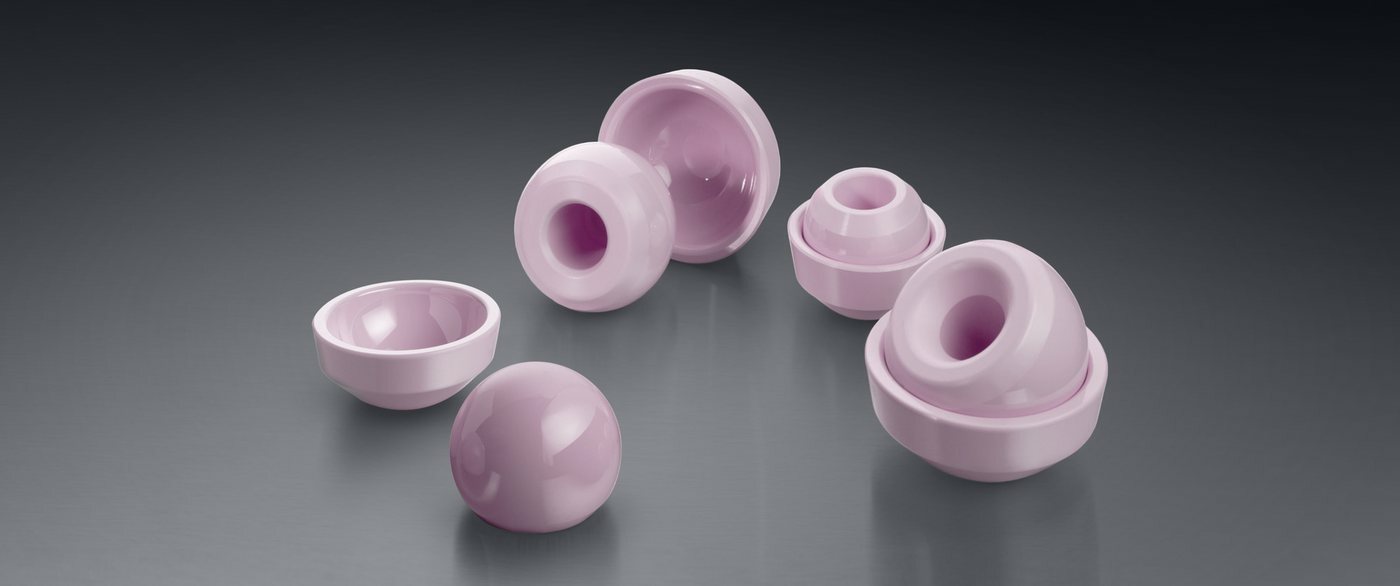1. Alumina ceramics Introduction
Alumina ceramics is a kind of ceramic material with α-Al2O3 as the main crystalline.Al2O3 content is generally between 75% to 99.9%. The ingredients classification is usually based on the content of Al2O3. The content of 75% is "75" porcelain, 85% is "85" of porcelain, 95% is "95" porcelain and 99% is "99" porcelain.

high purity alumina
2. Alumina ceramic manufacturing
The production process of Al2O3 porcelain is different due to different product performance requirements, different formulas, different shapes , sizes, and different molding methods.
Its production technology is also different, the basic process are:
Calcination of raw materials - grinding - forming - sintering
(1) The calcination
The purpose of calcining is to convert -Al2O3 to α-Al2O3 and remove Na2O and other low melting point volatile from the raw material.
(2) The grind
Calcined Al2O3 requires grinding, and the fineness of Al2O3 has a great influence on the product performance. General requirement less than 1μm particles for 15%~30%, if more than 40%, sintering will appear serious grain growth, when 5μm particles are bigger than10%~15% will obviously hinder sintering.Ball milling process can be used for wet grinding and dry grinding. 1%~3% additives, such as oleic acid, can be added during dry grinding. It can prevent particles from sticking and improve the efficiency of ball grinding.
(3) The molding
Various methods can be used, such as grouting, molding, hot-press, hot-press and isostatic pressing.
(4) Sintering
Sintering system has a great influence on the density and structure of Al2O3 porcelain, which also affects the performance of the product. Al2O3 porcelain is generally sintered under the condition of lower than the temperature limit by appropriately extending the heat preservation time.
3. Properties and applications of alumina ceramics
Al2O3 porcelain has a wide range of uses. According to the different content of Al2O3, it has also different properties and applications.
(1) High mechanical strength
The bending strength of Al2O3 porcelain sintered product can reach 250MPa, and the hot pressing product can reach 500MPa. The purer the Al2O3 component, the higher the strength. The strength can be maintained to 900℃ at high temperature. The mechanical strength of Al2O3 porcelain can be used to make porcelain and other mechanical components.
(2) High resistivity, good electrical insulation performance ,temperature resistivity 1015Ω▪cm , dielectric strength 15 kv/mm, using the insulation and intensity, can be made into the base plate, pipe plug, circuit shell, etc.
(3) High hardness
Mohs hardness excellent resistance is 9, it is widely used in the manufacture of tools, grinding wheel, abrasive, drawing, extrusion, bearing and so on. Al2O3 ceramic tool can be used for machining automobile engine and aircraft parts, and its high precision can be obtained with high cutting speed.
(4) High melting point and corrosion resistance
The melting point of 2050℃ can resist the corrosion of Be, Sr, Ni, Al, Fe, Ta, Mn and other molten metals. NaOH, glass, slag erosion also has a high tensile capacity. Does not interact with Si, Sb, Bi in inert atmosphere. Therefore, it can be used as refractory, furnace tube, glass drawing crucible, hollow ball, fiber, thermocouple protective cover, etc.
(5) Excellent chemical stability
Many complex sulfides, phosphates, arsenides, chlorides, nitrides, bromides, iodides, oxides, and sulfuric, hydrochloric, nitric, and hydrofluoric acids do not interact with Al2O3. Therefore, Al2O3 can be made into pure metal and single crystal growth crucible, human joint, artificial bone and so on.

BIOLOX® ceramic hip joint component
(6) Optical properties
Can be made into transparent material (transparent Al2O3 porcelain), used for the manufacture of sodium vapor lamp, microwave fairing, infrared window, laser
oscillating elements and so on.
(7) Ionic conductivity
Used as materials for solar cells and batteries.






